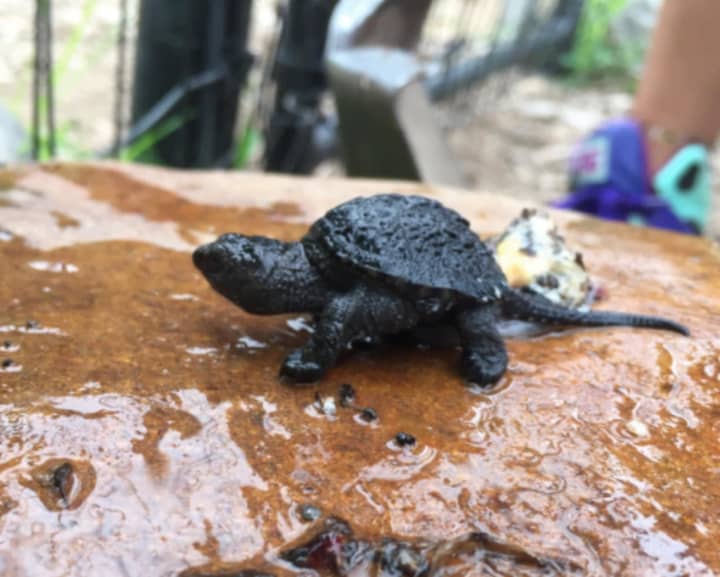It was only a matter of minutes before a fully-developed snapping turtle hatched right before their eyes — it's birthing sac still attached.
They call him "Lucky."
Then, over the weekend, another turtle hatched. They call him "Tiny."
"You can't enlist better protectors of nature and her creatures than children," said Stacey Antine, the founder of HealthBarn USA, now at the Irene Habernickel Family Park.
"When people ask me if we miss animals, from our old location, I say that we have lots of animals in their natural habitat, that's why we love this park so much," Antine said.
The garden was an unlikely place for turtles being that it's 100 feet from the pond, she said.
The HealthBarn is inviting the public for its release of Lucky into the pond on Friday at 3 p.m.
Campers have created a turtle sanctuary to save the other turtle eggs.
They covered the eggs in mulch and put up a temporary barrier with signage to keep the area safe and protected.
- Snapping turtles are not as aggressive as commonly believed. They will defend themselves if cornered and cut off from the water by striking out with their head, which can reach almost all the way back along the shell.
- Snapping turtles evolved about 40 million years ago and they are the ancestors of about 80% of all the turtles today.
- Today’s snapping turtles have hardly changed from 215 million years ago when Proganochelys, the most primitive turtles known, were around.
- A positive correlation exists between female body size and the number of eggs which can be laid in any given year.
- To maximize survival and therefore lifetime reproductive output, females have a constantly low reproductive effort with each clutch being only about 7% of their body mass.
- Around mid-June nesting will start. The females undertake extensive true nesting migrations in search for a preferably sandy, sunny nest site.
Click here to follow Daily Voice Ridgewood and receive free news updates.





